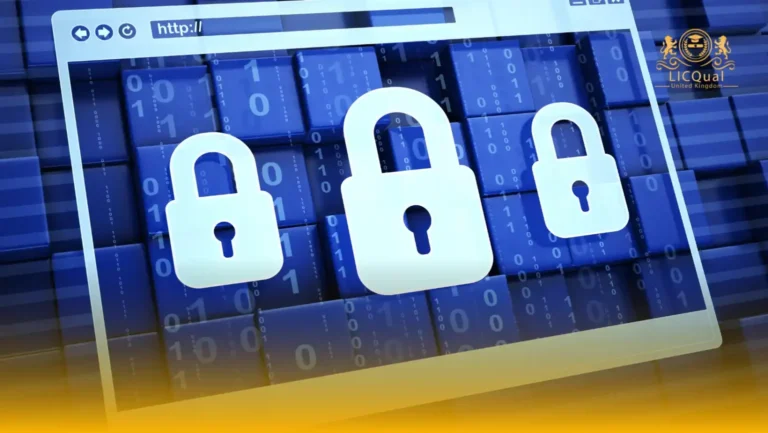Welcome to the LICQual Level 1 Award in First Aid course! This comprehensive training is designed to provide you with essential first aid knowledge and practical skills to respond effectively in emergency situations. Whether you’re an individual looking to enhance your personal safety skills or a professional seeking to meet workplace health and safety requirements, this course is perfect for you.
Our LICQual Level 1 Award in First Aid offers hands-on training with a focus on life-saving techniques. By completing this course, you’ll gain confidence in handling emergencies, from administering CPR to treating common injuries. This qualification equips you with the skills necessary to make a difference in critical situations, promoting safety and well-being in any environment.
The LICQual Level 1 Award in First Aid is a nationally recognized qualification that covers a range of essential first aid topics. Throughout this course, you’ll learn how to assess and manage a variety of injuries and medical emergencies. The course includes key areas such as recognizing and responding to unconsciousness, performing CPR, controlling bleeding, and managing burns, fractures, and other common injuries.
Delivered by experienced instructors, the course combines theoretical knowledge with practical exercises to ensure you’re fully prepared to act when it matters most. With flexible learning options, you can complete the LICQual Level 1 Award in First Aid at your own pace, gaining a valuable skill set that could save lives.
Get certified and improve your ability to provide immediate, effective first aid in emergency situations with the LICQual Level 1 Award in First Aid.
Course Overview
Qualification Title
LICQual Level 1 Award in First Aid
Total Units
6
Total Credits
6
GLH
12
Qualification #
LICQ2200044
Qualification Specification
To enroll in the LICQual Level 1 Award in First Aid, applicants must meet the following criteria:
|
Qualification# |
Unit Title |
Credits |
GLH |
|---|---|---|---|
|
LICQ2200044-1 |
Introduction to First Aid and Health & Safety |
1 |
2 |
|
LICQ2200044-2 |
Managing an Unresponsive Casualty |
1 |
2 |
|
LICQ2200044-3 |
Cardiac Arrest and CPR Techniques |
1 |
2 |
|
LICQ2200044-4 |
Managing Wounds and Bleeding |
1 |
2 |
|
LICQ2200044-5 |
Treating Burns, Scalds, and Environmental Injuries |
1 |
2 |
|
LICQ2200044-6 |
Managing Fractures, Sprains, and Strains |
1 |
2 |
By the end of this course, learners will be able to:
Unit 1: Introduction to First Aid and Health & Safety
- Understand the basic principles of first aid and health & safety in emergency situations.
- Demonstrate knowledge of the first aider’s roles and responsibilities in responding to accidents and injuries.
- Apply risk assessment techniques to identify potential hazards and ensure safety during an emergency.
- Understand infection control and hygiene practices relevant to first aid.
Unit 2: Managing an Unresponsive Casualty
- Recognize the signs of an unresponsive casualty and perform a primary survey effectively.
- Demonstrate the correct technique for placing an unconscious casualty in the recovery position.
- Apply the principles of airway, breathing, and circulation (ABC) checks in an emergency situation.
- Respond appropriately to an unresponsive casualty while maintaining personal safety and reducing further harm.
Unit 3: Cardiac Arrest and CPR Techniques
- Identify the signs and symptoms of cardiac arrest and understand when CPR is necessary.
- Perform effective cardiopulmonary resuscitation (CPR) on an adult casualty, including chest compressions and rescue breaths.
- Understand the correct use of an Automated External Defibrillator (AED) and perform basic defibrillation if needed.
- Recognize the importance of early intervention in cardiac emergencies to improve survival chances.
Unit 4: Managing Wounds and Bleeding
- Identify different types of wounds (abrasions, cuts, punctures, and lacerations) and assess their severity.
- Apply appropriate first aid techniques to control bleeding, including direct pressure, bandages, and dressings.
- Demonstrate proper wound cleaning and dressing to prevent infection and promote healing.
- Understand when to seek further medical assistance for severe or complex wounds.
Unit 5: Treating Burns, Scalds, and Environmental Injuries
- Identify different types of burns and scalds, including thermal, chemical, and electrical burns.
- Apply correct first aid treatment for burns and scalds, including cooling and dressing the wound.
- Recognize signs of environmental injuries such as heatstroke, hypothermia, and frostbite.
- Provide appropriate first aid responses to environmental injuries, ensuring the casualty’s safety and comfort.
Unit 6: Managing Fractures, Sprains, and Strains
- Recognize the symptoms of fractures, sprains, and strains and assess their severity.
- Demonstrate proper techniques for immobilizing fractures to prevent further injury.
- Apply first aid for sprains and strains, including the R.I.C.E. method (Rest, Ice, Compression, Elevation).
- Understand the importance of seeking professional medical assistance for serious musculoskeletal injuries.
This diploma is ideal for:
Assessment and Verification
All units within this qualification are subject to internal assessment by the approved centre and external verification by LICQual. The qualification follows a criterion-referenced assessment approach, ensuring that learners meet all specified learning outcomes.
To achieve a ‘Pass’ in any unit, learners must provide valid, sufficient, and authentic evidence demonstrating their attainment of all learning outcomes and compliance with the prescribed assessment criteria. The Assessor is responsible for evaluating the evidence and determining whether the learner has successfully met the required standards.
Assessors must maintain a clear and comprehensive audit trail, documenting the basis for their assessment decisions to ensure transparency, consistency, and compliance with quality assurance requirements.







